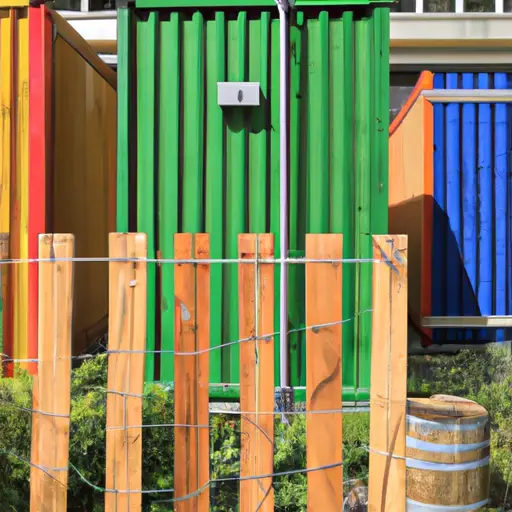Rewilding Urban Spaces through the Magic of Containers
Urbanization has undeniably transformed our world, offering immense opportunities for progress and development. However, in the process, we have also distanced ourselves from nature, leaving concrete and asphalt to dominate our cities. The concrete jungles we live in often lack green spaces that have a positive impact on our well-being and the environment. But what if we could bring a touch of wilderness back into city living? Enter the concept of “rewilding urban spaces through the magic of containers.”
Urban rewilding is not a new idea; it aims to restore natural elements in urban environments for the benefit of both humans and wildlife. It involves reintroducing native plants, creating habitats for animals, and offering green spaces for residents to connect with nature. By utilizing containers as a tool for rewilding, however, we can take this concept to another level.
Containers – those versatile metal boxes used for shipping goods – have long been an integral part of global trade. They travel across oceans on massive cargo ships, transporting various products to every corner of the world. But what happens when their shipping days come to an end? Instead of being discarded or recycled, these containers can be repurposed into environmentally friendly solutions that enhance urban spaces.
The magic lies in how these containers can be transformed into mini ecosystems within urban environments. With a little creativity and design, they can be turned into urban gardens, rooftop greenhouses, community parks, or even vertical forests.
One extraordinary example is Singapore’s Gardens by the Bay project. This iconic attraction hosts two large domes known as the Flower Dome and the Cloud Forest Dome. These domes house an incredible array of plant species from around the world in carefully controlled environments. While they are not made from shipping containers themselves, they resemble them with their stacked structure.
The repurposing of containers offers several advantages when it comes to rewilding urban spaces. Firstly, they provide a ready-made infrastructure that can be easily installed or relocated as needed. Containers are sturdy and durable, and their modular design allows for flexibility in arranging them to fit any space.
Secondly, containers are sustainable solutions that reduce waste. By converting old containers into green spaces, we give them a new purpose and extend their lifespan considerably. This approach not only benefits the environment but also reduces the need for new construction materials.
Moreover, container-based rewilding projects have the potential to engage communities in environmental stewardship. Urban gardens can be transformed into communal spaces where residents come together to grow their own food or participate in educational programs about sustainability and biodiversity. Such initiatives foster a sense of ownership, encourage social interactions, and promote a healthier lifestyle.
Container-based urban rewilding also addresses the issue of limited space in dense city environments. With scarce land available for conventional parks or gardens, utilizing vertical spaces is an intelligent solution. By stacking containers on top of each other or creating vertical garden walls, we maximize space usage while adding a touch of greenery to otherwise barren walls.
While container-based rewilding projects are growing in popularity, there are still challenges to overcome. Building regulations and approval processes can sometimes hinder progress. Additionally, ensuring adequate maintenance, water supply, and irrigation systems are crucial to sustaining these projects over time.
However, with increasing awareness about the importance of nature in urban environments and the need for sustainable solutions, container-based rewilding holds immense potential for transforming our cities into healthier and greener habitats.
Rewilding urban spaces through the magic of containers offers an innovative approach to blend nature with modern city living. It reconnects us with our wild roots while addressing the pressing challenges of environmental degradation and limited green spaces. By embracing this concept and unleashing our creativity, we can turn cities back into thriving ecosystems where humans and wildlife coexist harmoniously once again.













